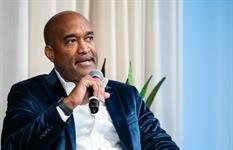
Leaders must be ‘emotionally present.’
When the College of American Pathologists had a cybersecurity breach last year, Nancy Johnson found herself at the center of a communications storm.
As the organization’s director of brand journalism and storytelling, Johnson helped the executive team respond by writing updates and sharing information with employees. But at first, the team got it wrong, she said.
“We started out being pretty cagey,” Johnson said. “We didn’t want to say too much until we had more details. The problem was, people already knew something was wrong. Systems were down, they couldn’t log in and the rumor mill was going full speed.”
The intention behind the cautious approach was to protect sensitive information. But the effect was confusion and growing frustration among staff instead.
“It felt like we were hiding something, even though that wasn’t our intent,” Johnson said. “We realized pretty quickly that our silence was doing more harm than good.”
That realization prompted a full pivot in CAP’s crisis comms strategy. Instead of trying to control the narrative by saying less, Johnson advised the leadership team to be open about what they knew and what they didn’t, both internally and externally.
“We started saying, ‘Here’s what we can share right now. Here’s what we’re still investigating. And here’s when you’ll hear from us next,’” she said. “That shift made all the difference.”
With CAP’s intranet and collaboration tools offline, Johnson’s team relied on email to maintain contact.
“We sent updates every morning and afternoon,” she said. “Even if there wasn’t major progress to report, we wanted people to know we hadn’t gone silent. In a crisis, silence is the worst sound.”
By allowing stakeholders in on the information, even when they didn’t have all the answers, meant employees could trust they were being given the most accurate, up-to-date information, she said.
“It’s okay to say, ‘I don’t know yet,’” Johnson said. “What matters is adding, ‘I’ll find out and get back to you by Friday,’ and then doing it. Follow-through is where credibility is built.”
Employees noticed. The regular cadence of updates, however brief, built reassurance and credibility.
“People told us those emails were their lifeline,” Johnson said. “It showed them that leadership was engaged and that we were being upfront.”
Leading with empathy and authenticity
The comms team worked with leadership on a different strategy. One where authenticity, transparency and empathy were at the core of CAP’s communications.
“At first, our CEO wasn’t front and center in those communications,” she said. “He was new, only about six months into the job, and understandably focused on managing the situation behind the scenes.”
But Johnson knew employees needed visible leadership for true assurance.
“I said, ‘They need to hear from you,’” she said. “People wanted to know their leader was not only informed but emotionally present.”
When the CEO finally sent a personal message to staff, the impact was immediate.
“He said something like, ‘I’ve heard about the heart and spirit of this organization, but now I see it in the way you’re all responding,’” Johnson said. “It was short, heartfelt and human. That note did more to restore morale than any technical update.”
For Johnson, it was a powerful reminder that leadership comms isn’t only about sharing facts, but about authentic connection.
“When leaders show empathy and gratitude, it grounds the whole organization,” she said. “People want to follow someone who sees them, not just the problem.”
Coaching leaders to be real
Part of Johnson’s job now is helping executives understand that authenticity boosts credibility.
Before major announcements, Johnson sits down with leaders to understand their natural communication style.
“Some are great in front of a crowd but others do better in writing,” she said. “The goal is to play to their strengths, not force them into a mold.”
When preparing an executive for high-pressure conversations, she role-plays questions they might face.
“You don’t want their first time answering tough questions to be in front of employees or media,” she said. “Practice doesn’t make you scripted, it makes you steady.”
Feedback is imperative
After any crisis, leadership must listen to feedback from employees and other stakeholders and assess what could be have been done better. Was the way the information was communicated appropriate? Did it resonate? Was it clear?
“We always ask, ‘How did it land?’” she said. “Did employees understand what we meant? Did they trust it?”
The last thing any team wants is confusion or mistrust, she said.
Feedback gathered through quantitative data like surveys and employee pulse checks are imperative. This should also be done through informal networks like checking in with department heads, long-time staff or other team members.
“They’re the ones who hear the chatter,” she said. “You can’t just rely on survey data. You have to listen for the mood.”
Register now to hear Johnson and other industry experts speak during Ragan’s Future of Communications Conference, Nov. 12-14 at the Hyatt Regency in Austin, TX.
Courtney Blackann is a communications reporter. Connect with her on LinkedIn or email her at courtneyb@ragan.com.
The post How the College of American Pathologist’s cyber crisis reshaped its CEO’s leadership voice appeared first on PR Daily.














